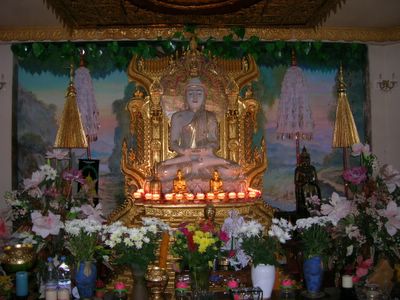Many people, including myself, are sceptical about the authenticity of such relics, there are after all SO many of them. I had that doubting question in my mind while visiting this stupa. “Could it possible be true that we, in Britain, have something so valuable”, “Where are they, is that them in that glass container on the altar”? My mind questioned and my eyes looked but could not see or find. I made my bows wholeheartedly in faith. Several days latter a chap wrote me an e-mail asking if the Buddha had given any teachings on what hinders practice and one of the monks from Throssel found this for me.
The Hindrances
There are five kinds of hindrances (Nivaranas) which often arise during meditaton: sensuous desire (kamacchanda), ill-will (byapada), sloth and torpor (thina-middha), restlessness and worry (uddhacca-kukkuca) and sceptical doubt (vicikiccha). Sensuous desire pulls the mind away from meditation. Ill-will agitates the mind by dissatisfaction at what one is achieving. Sloth and torpor, restlessness and worry, and sceptical doubt blind and disturb the mind and one’s practice. The Buddha compared sensuous desire with water mixed with various dyes which distort a reflection; ill-will is like boiling water; sloth and torpor is like water overgrown with slime or choked with plants; restlessness and worry are like water agitated by the wind; and sceptical doubt is like muddy water. Just as in such water one cannot see one’s reflection clearly, so in the presence of these five hindrances one cannot see things as they are. Various ways of overcoming them were taught by the Buddha. Most methods centre on raising awareness that they are only temporary states of mind and recognising them as the hindrance they are to one’s progress.
[Extract from the book “Emptying the Rose-Apple Seat” by Ven. Dr. Rewata Dhamma]
By amazing coincedence the late Venerable Rewata Dhamma was the monk from Burma who tirelessly worked for years to raise the money to build the stupa and adjoining Vihara (monks residence) in Birmingham where the relics are enshrined.

The altar with offerings. This is sited in a shrine underneath the stupa.
